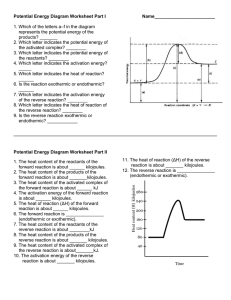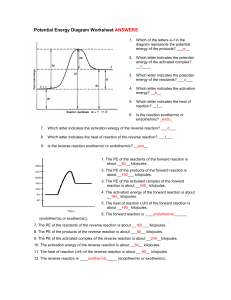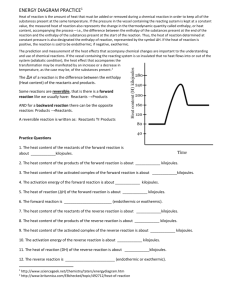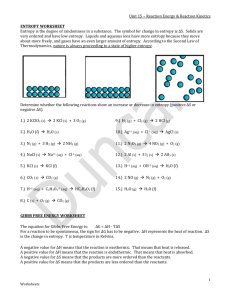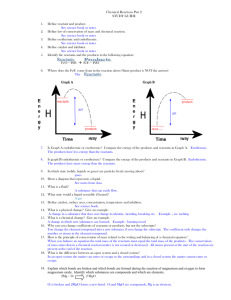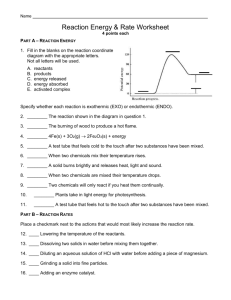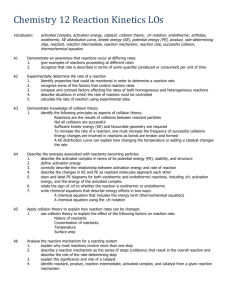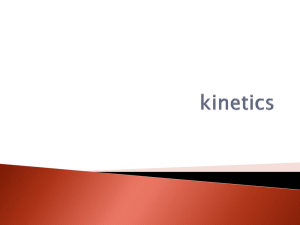Potential Energy Diagram Worksheet ANSWERS
advertisement
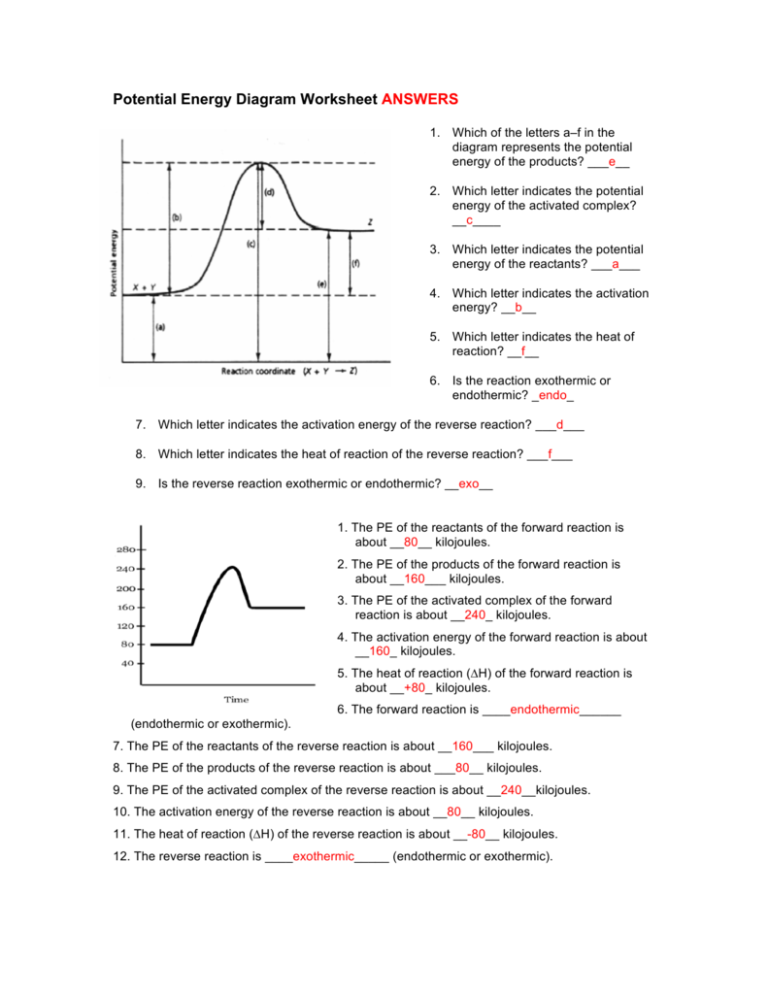
Potential Energy Diagram Worksheet ANSWERS 1. Which of the letters a–f in the diagram represents the potential energy of the products? ___e__ 2. Which letter indicates the potential energy of the activated complex? __c____ 3. Which letter indicates the potential energy of the reactants? ___a___ 4. Which letter indicates the activation energy? __b__ 5. Which letter indicates the heat of reaction? __f__ 6. Is the reaction exothermic or endothermic? _endo_ 7. Which letter indicates the activation energy of the reverse reaction? ___d___ 8. Which letter indicates the heat of reaction of the reverse reaction? ___f___ 9. Is the reverse reaction exothermic or endothermic? __exo__ 1. The PE of the reactants of the forward reaction is about __80__ kilojoules. 2. The PE of the products of the forward reaction is about __160___ kilojoules. 3. The PE of the activated complex of the forward reaction is about __240_ kilojoules. 4. The activation energy of the forward reaction is about __160_ kilojoules. 5. The heat of reaction (∆H) of the forward reaction is about __+80_ kilojoules. 6. The forward reaction is ____endothermic______ (endothermic or exothermic). 7. The PE of the reactants of the reverse reaction is about __160___ kilojoules. 8. The PE of the products of the reverse reaction is about ___80__ kilojoules. 9. The PE of the activated complex of the reverse reaction is about __240__kilojoules. 10. The activation energy of the reverse reaction is about __80__ kilojoules. 11. The heat of reaction (∆H) of the reverse reaction is about __-80__ kilojoules. 12. The reverse reaction is ____exothermic_____ (endothermic or exothermic). Reaction Rates and Potential Energy Diagrams 1. Chemical reactions occur when reactants collide. For what reasons may a collision fail to produce a chemical reaction? Not enough energy; improper angle. 2. If every collision between reactants leads to a reaction, what determines the rate at which the reaction occurs? Nature of reactants, Concentration, Temperature, Catalysts. 3. What is the activation energy of a reaction, and how is this energy related to the activated complex of the reaction? Ea is the minimum amount of energy for a reaction to occur. It is the amount of energy required to create an activated complex. 4. What happens when a catalyst is used in a reaction? A catalyst changes the reaction mechanism, in the process lowering the activation energy. 5. Name 4 things that will speed up or slow down a chemical reaction. Increase concentration by distillation of a solvent, Increase concentration by increasing pressure of a gas, Increase temp, Add a catalyst, Add an inhibitor. 6. Draw an energy diagram for a reaction. Label the axis, PE of reactants = 350 KJ/mol, Ea = 100 KJ/mol, PE of products = 250 KJ/mol. 7. Is the reaction in # 6 exothermic or endothermic? Explain. Exothermic. The ΔH is -100 KJ/mol which means heat is released. 8. How could you lower the activation energy for the reaction in #6? Add a catalyst.
